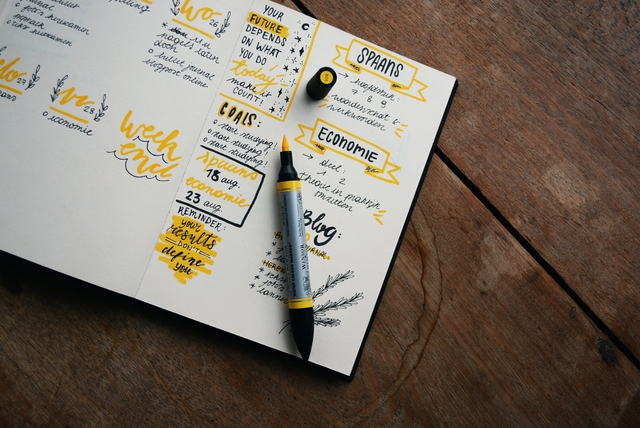
Why I’ve Decided to do Planning
I’ve never been much of a planner. I have goals and thoughts on how I can and will achieve them.
I usually achieve most of my goals and set myself up for success in the long run. However, as I approach the late half of my thirties, I’ve found it more urgent to be mindful of what goals I set, and how and when I should achieve them.
I’m not a good planner and I won’t pretend it’s easy. I find personal planning really boring and if it takes me a day to do it, I will probably not finish it. That’s why I came up with a very basic personal planning that a lazy person, like me, can do.
The goal is to make planning as simple as it can be. I’ve limited my personal planning into three main steps: setting goals, prioritising and creating action items.
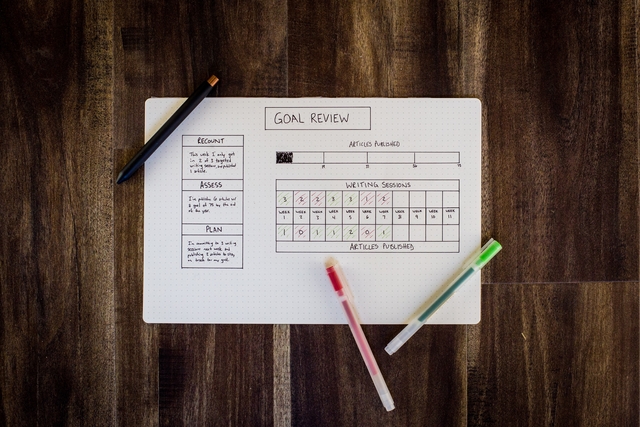
Setting Goals
You can simply write down a list of goals, but having a guide on how to do it in a more structured way will get you more engaged.
Vision
Some people prefer creating vision documents, however, I chose to simply create a theme. For the second half of 2019, my theme is “to be healthier.”
Wheel of Life
Having a vision to guide you in goal setting is the first step to a focused planning. Being able to put goals into categories will make it better. That’s where I found the “Wheel of Life” to be helpful.
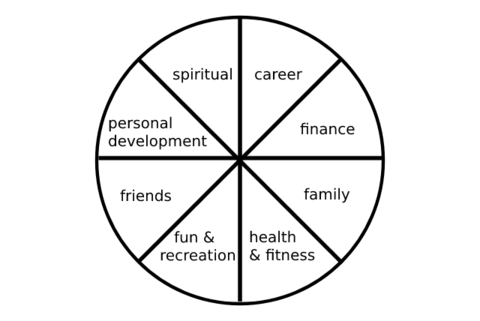
There’s more to the “Wheel of Life”, but I’m using it just as a guide on what aspects of life I want my goals to fall into.
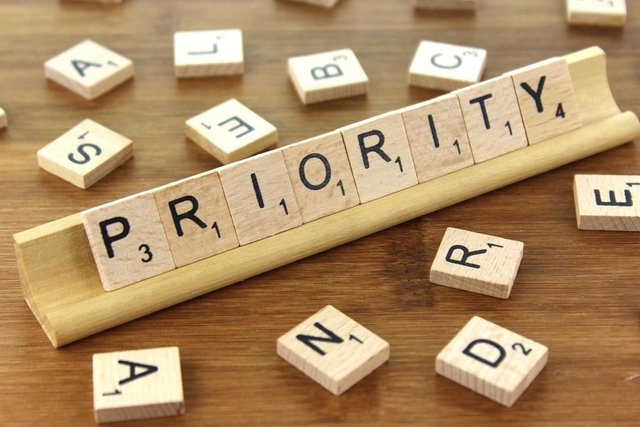
Prioritising
Now that you have a vision and specific “buckets” in life you want to focus on, you can start writing down your goals. But as soon as you start doing this, you will find yourself putting down more than you can handle.
You need to narrow down your goals to what is most important for you. There’s a lot of way to do this, but let me suggest a few concepts I found helpful.
Warren Buffett’s 5/25 Rule
Warren Buffett is one of the most respected stock market investors in the world. He also owns a lot of businesses and therefore would know something about prioritisation.
His “5/25 rule” or “2 lists method” tells us to list down 30 goals and select the top 5 most important goals. The remaining 25 goals is your avoid-at-all-cost list. You should not put effort into the other 25 goals until you’re done with the first 5.
Warren Buffett’s 20 Slot Rule
If you are given a ticket with only 20 slots in it, each one representing the investment you can make, you will think carefully which investments to take on.
This is the same in life. We all have a finite time on this Earth (if you know the secret to immortality please do let me know) and we need to be mindful of how we spend it.
With these two concepts, I’ve been able to trim down my goals into the most important ones. I limited my goals to at most three per life category.
You can also consider reading about Dwight Eisenhower’s Matrix and the Ivy Lee Method to draw inspiration from about focus.

Action Items
Goals are worth nothing unless you write down what actions you need to do to achieve them.
It’s time to focus on action items for each goal that you’ve decided to pursue. You don’t need to be specific or detailed. Just write down what comes into mind.
Here’s a snippet of two categories in my planning:
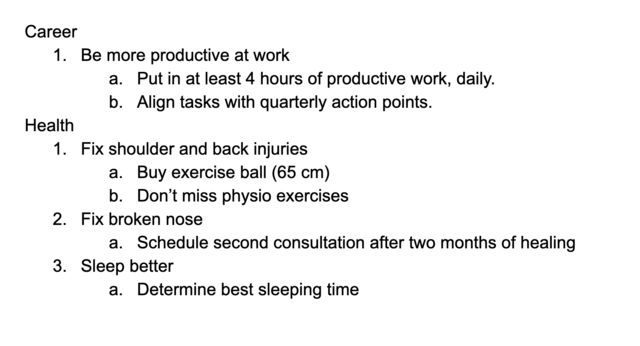
You can also use the methods we’ve discussed in the previous sections, especially Dwight Eisenhower’s Matrix which will help you determine which are important actions you need to do immediately, which actions you can schedule on later dates, which actions you can delegate and which actions are unnecessary.
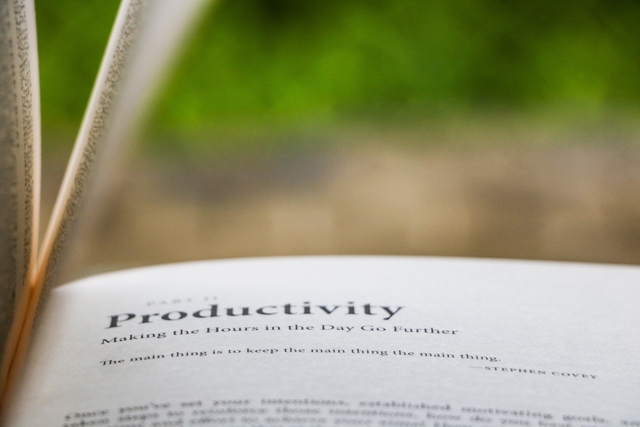
Productivity and Focus
I wish I have a very good camera, so I can share images of the three pages in a regular notebook where I did all of my planning. The point is, you don’t need to have a very detailed plan in life. Start simple.
Remember these two words: productivity and focus. Your actions, habits and decisions should always be towards productivity, and to achieve productivity, you have to stay in focus.
Finally, allow yourself to be lazy and rest from time to time. Allow yourself to make mistakes and learn from them. The key is to allot time to evaluate where you are in achieving your goals, and adjust as needed. Getting bogged down by failures will only pull you down and make you move slower in achieving your goals.